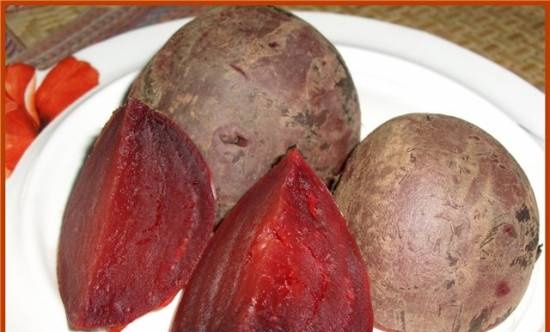|
 Assuming a northern origin for potatoes, it becomes clear why they respond so well to a long northern day. And this is what is remarkable: when the "Early Rose" variety was replaced by other varieties, it lingered the longest, again, in the north, in Yakutia. Assuming a northern origin for potatoes, it becomes clear why they respond so well to a long northern day. And this is what is remarkable: when the "Early Rose" variety was replaced by other varieties, it lingered the longest, again, in the north, in Yakutia.
It turns out that northern conditions with a long day are more suitable for her than the south? If you believe the first version that the Early Rose was obtained from Chile with its short day, then how in a hundred years did it adapt so quickly to a long day?
And recently, in 1962, a third version also appeared. American biologist D. Corell from Texas said that wild potatoes grow in the mountains of Africa! He found it there at an altitude of about 2000 meters! He wrote about this in the book "Potatoes and his close relatives." Which version should you give preference to? None of the biggest potato connoisseurs spoke out definitively. The French seed grower A. Velmorin considers the history of potatoes "rather dark", the head of Soviet botanists, academician V. Komarov added that not everything is clear here, and academician S. Bukasov said that this story is "shrouded in legends."
Now let's take another problem - the Colorado potato beetle. Until 1824, he was not noticed in America. He lived peacefully in natural thickets, feeding on wild nightshades. When the potato plantations expanded, the beetle moved to them. And it began! By 1865 he bred so much on "gratis grubs" that he began to move a living armada. There were 25 beetles on the bush. In two days they stripped the bush naked. Having finished with potatoes, the beetles rushed to cabbage, oats and even rose hips.
Potato prices have risen to fantastic levels. It has become more expensive chocolates... By 1875, beetles had escaped the countryside and entered the streets of New York. They occupied the city beach and filled it several kilometers in length. We climbed through the railroad bed. Stopped trains. And the farmers thought that potato culture was over forever.
But there was, for sure, some simple remedy for the beetle, but no one guessed. For example, what was recently discovered by an amateur vegetable grower G. Romashov. The beetle did not appear on his site, and the neighbors were constantly "smashing" potato plantings. Romashov compared the plots. Everything was the same, except for one thing: poplars grew next to the potatoes at Romashov. The neighbors did not have poplars. Having wished to be convinced of his assumption, the vegetable grower made an experiment in the spring of 1979. He collected poplar leaves, boiled them in a bucket of water and, after waiting three days to brew, sprinkled the neighboring bushes. The beetle disappeared immediately and did not appear for three weeks.
But, of course, it is much safer to breed a special variety that is inedible for the beetle. And then one story comes to mind that happened at the beginning of our century. The Rural Owner magazine unexpectedly reported sensational news. The French gardener J. Libergerie introduced a new potato variety in France - Solyanum Commerce. This was really surprising. Indeed, for all four centuries since the discovery of America, in the entire history of potatoes, people have used one type - tuberous saltum. And then, as soon as possible - the second. Yes, and what! The press spared no praise. The yield of the new species exceeds all known varieties of the old one. Withstands temperatures of minus three and a half degrees. Pests hardly touch him. And most importantly, the Colorado potato beetle bypasses! At the same time, the taste is also good.
Inquiries rained down in the editorial office of Rural Owner: where to get tubers for planting? The editors sent him to the gardener N. Ponomarev from the Koi station of the Tver province. Prices for planting material have risen tenfold. When the passions subsided a little, it turned out that botanists had known about the new species for a long time.It was discovered back in 1767 by the traveler A. Commerson near the city of Montevideo in Uruguay. He grew up there along the sandy banks of the Mercedes rivulet. It had wrinkled leaves, brown stems, and purple flowers. When the river raged and washed away the bushes, oval red-blue tubers remained on the sand.
The question arises: why for a century and a half no one tried to introduce this potato into culture? Agronomist N. Vasiliev decided to find out empirically. I planted three varieties side by side: Early Rose, a good variety Emperor and a Uruguayan species. Autumn has come. The tubers of Kommerson potatoes turned out to be the largest. For three years Vasiliev planted his varieties - and three times he won a new variety.
We also checked the starch content. The Uruguayan won here too. Only the taste was mediocre. The pulp was found rough, and even sweetish. Is that good for livestock feed? They forgot about the Colorado potato beetle and did not write more about the Uruguayan potato. However, this is what is alarming. The wild potato chaco belongs to the same clan as the Uruguayan species. Botanists are working hard with him now. Chaco also increases pest resistance when crossed with a cultivar. There is only one drawback: too much poisonous substance - solanine. It is worth biting a boiled tuber, as the mouth begins to sore and sore throat. Also bitterness. Maybe this is what scares away the pest?
True, there is a bit too much solanine in good table varieties. Recently, a connoisseur of potatoes N. Lekhnovich found out that sometimes valuable varieties Lorkh and Korenevsky are guilty of this. When Korenevsky was planted in the Sverdlovsk region, everything was fine in the wet years, but in dry years, poisoning was observed. Solanin!
And now let's go back to the clan where the Uruguayan species and chaco potatoes are leaving. There are also a few more interesting species. The world learned about one of them - yellow-green potatoes - in 1979. The essence of the matter is that the Peruvian scientist K. Ochoa went to Bolivia to collect wild potatoes. In the virgin forests of the department of La Paz, a plant that stood out sharply among the gloomy tropical greenery with its yellowish foliage caught his attention. Perhaps the Peruvian would not have noticed the potato bush, but as he passed, he touched it. And immediately he felt a piercing smell.
He stopped and saw a meter high bush with white pentagonal flowers.
The smell came from the hairs. They covered both the stem and the leaves. Some are long, some are short. But both of them have bubbles with a sticky liquid at the ends. The green-yellow potatoes reminded botanists of a sundew. Just like the sundew, the glandular hairs glue insects that dared to crawl along the bush. Only the victims do not use their potatoes for food. The unfortunate simply lose their mobility and die. We sorted it out later. Mostly aphids, the main carriers of viral diseases of the potato, perish. It has been tempting to use yellow-green to create pest-resistant varieties. After all, sticky hairs in potatoes are a unique phenomenon. Until now, they have been found in only three species: one Mexican and two Bolivian.
There is another Achilles' heel for potatoes. Many varieties are poorly stored in winter. Germinate quickly. A simple and reliable remedy was unexpectedly found against this misfortune. A certain gardening teacher did not know where to put the winter apples. He put several boxes in the store along with the potatoes. By the spring, I discovered that not a single tuber had sprouted. I guessed that ethylene gas, which is released from apples, inhibits germination.
The educated teacher decided to immediately clarify how many apples are needed for preservation. He took a sturdy paper bag, filled it to the top with artophil and threw a dozen apples into it. The bag was tied tightly to prevent the ethylene from escaping too quickly. The tubers are perfectly preserved. Then the experiment was repeated in open form. A dozen apples had no effect here. I had to increase the rate to one and a half buckets.
And now let's not forget to bring words of gratitude to those to whom the world owes its potato prosperity. Those who gave us confidence that nothing will happen to our "second bread". That he will not disappear, will not perish, as it once did in Ireland in the middle of the last century. That it will become even tastier and more nutritious.
We owe all this to our Russian botanists. In 1925, Academician N. Vavilov was the first to set off an expedition to South America, the homeland of wild potatoes. For several years, they collected sixty wild types of potatoes and twenty semi-cultivated ones! Only then did scientists from other countries follow in their footsteps.
It's funny to remember a funny thing. In 1896, the Rural Owner magazine published a drawing of a giant potato tuber the size of a large melon. Weight thirty-five kilograms, length seventy centimeters! I do not know if this information of the magazine has been verified, but, in any case, if such a giant existed, then he did not give anything to humanity. Much more important are potatoes of regular sizes, but which do not suffer from pests, ripen quickly and are well stored. This is exactly what Academician N. Vavilov was striving for, collecting wild tuber-bearing species beyond the seas, beyond the mountains.
A. Smirnov. Tops and roots
|









